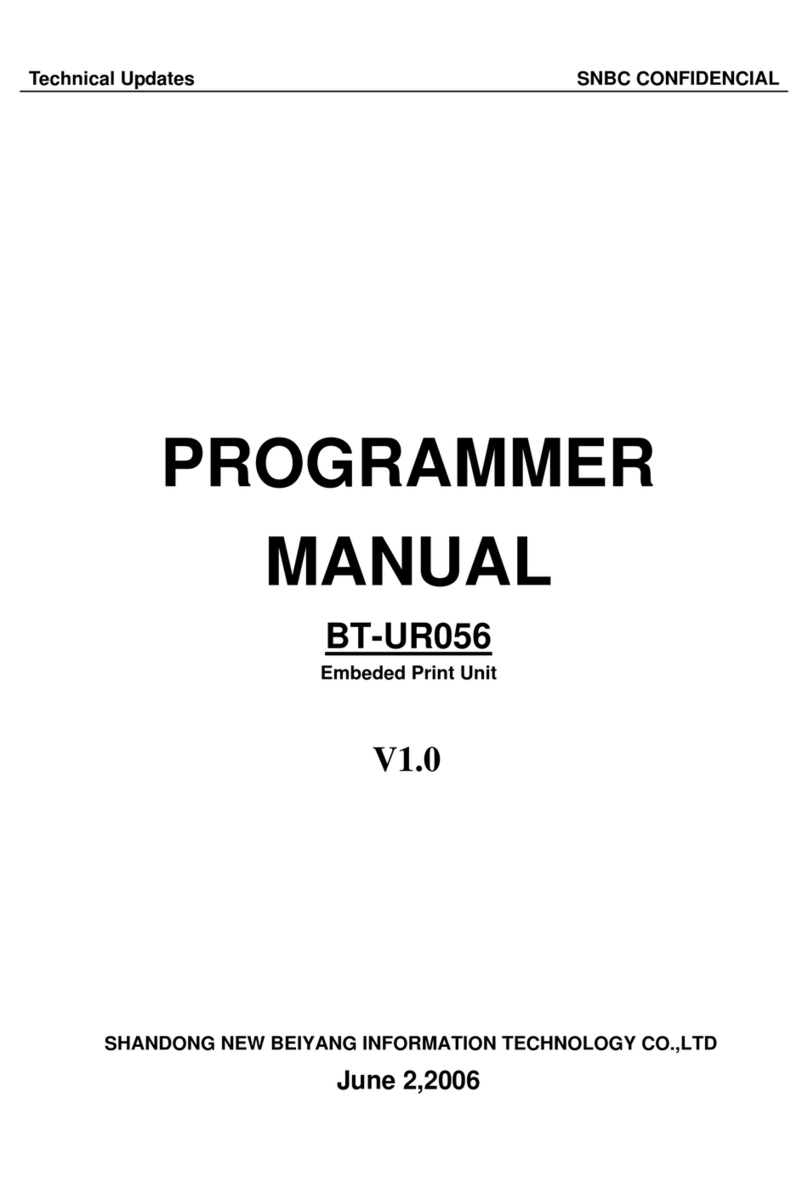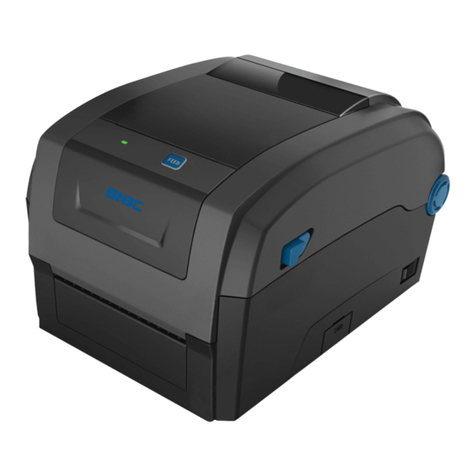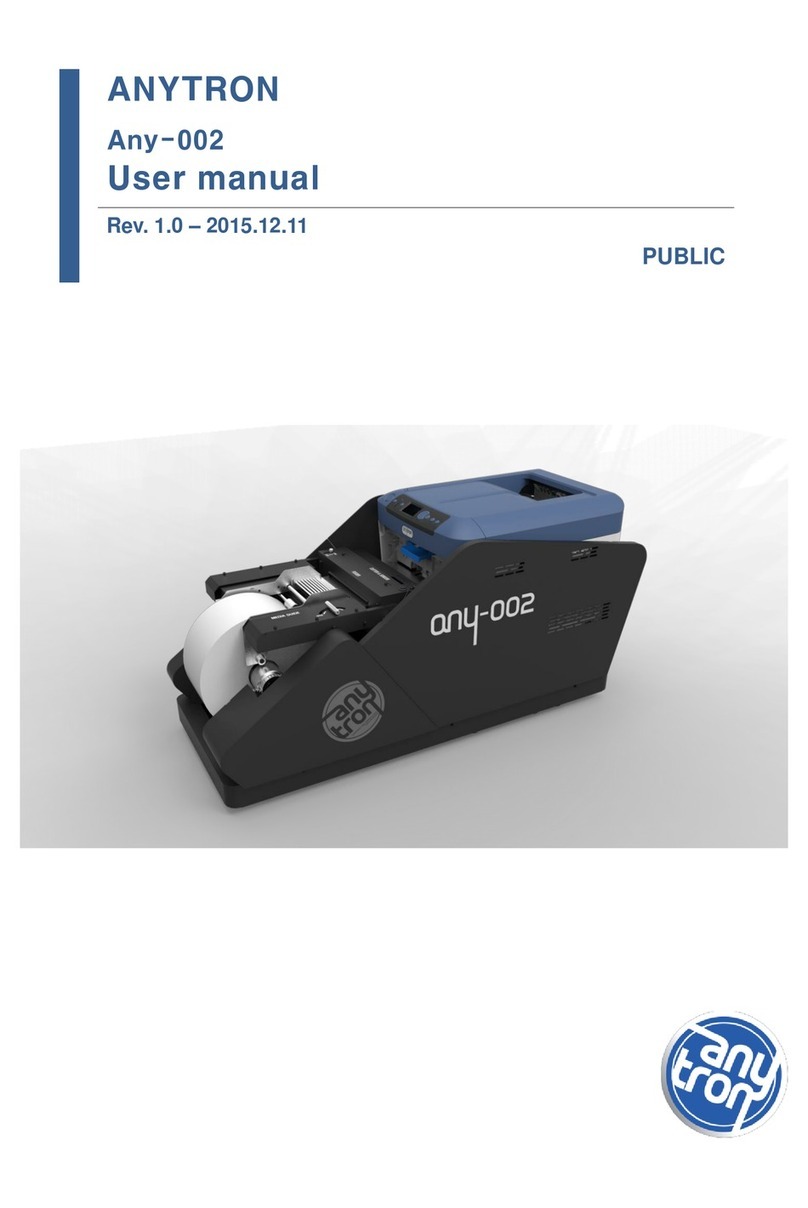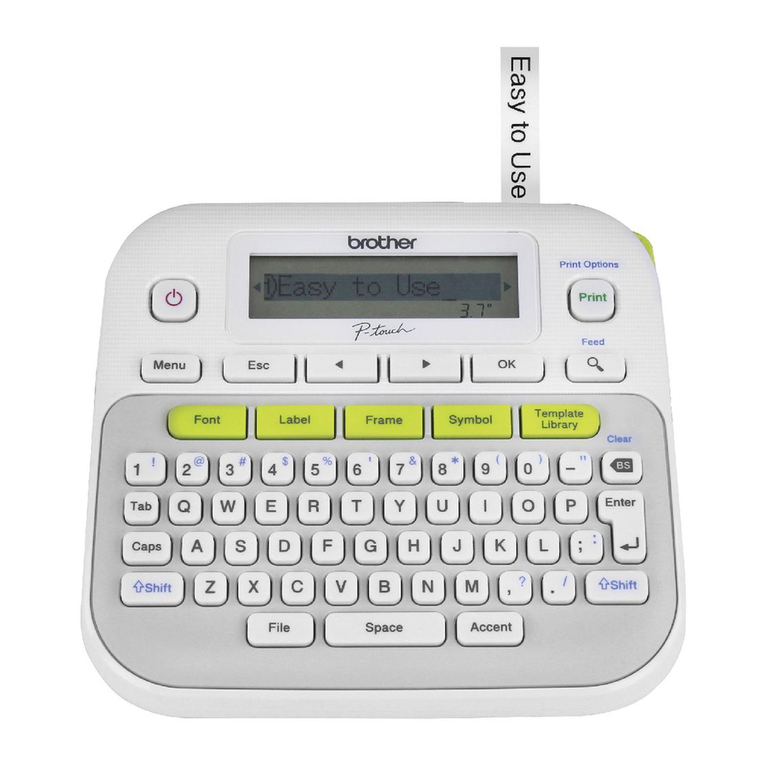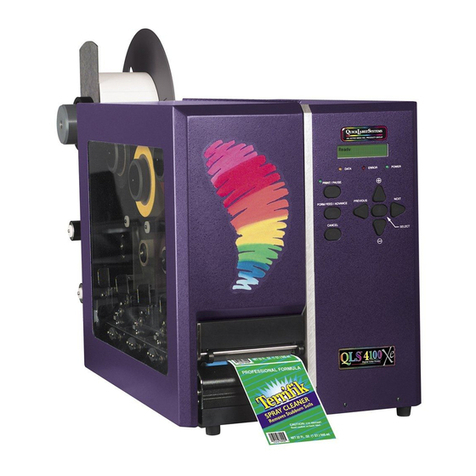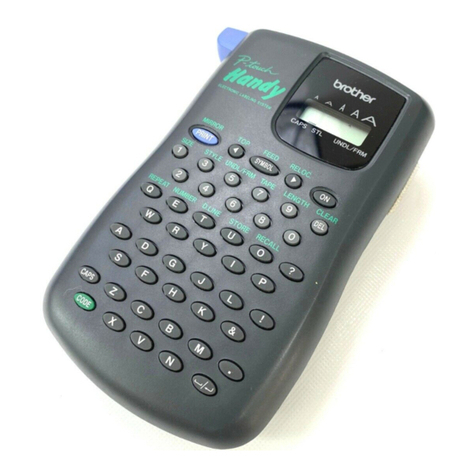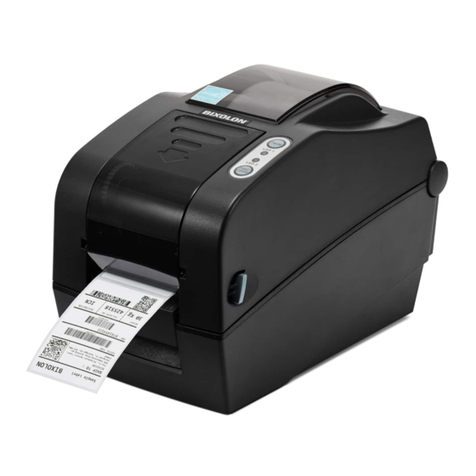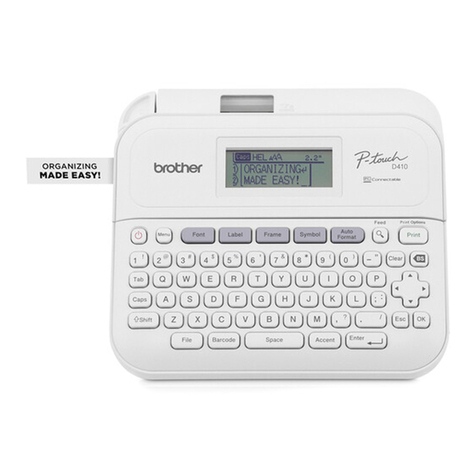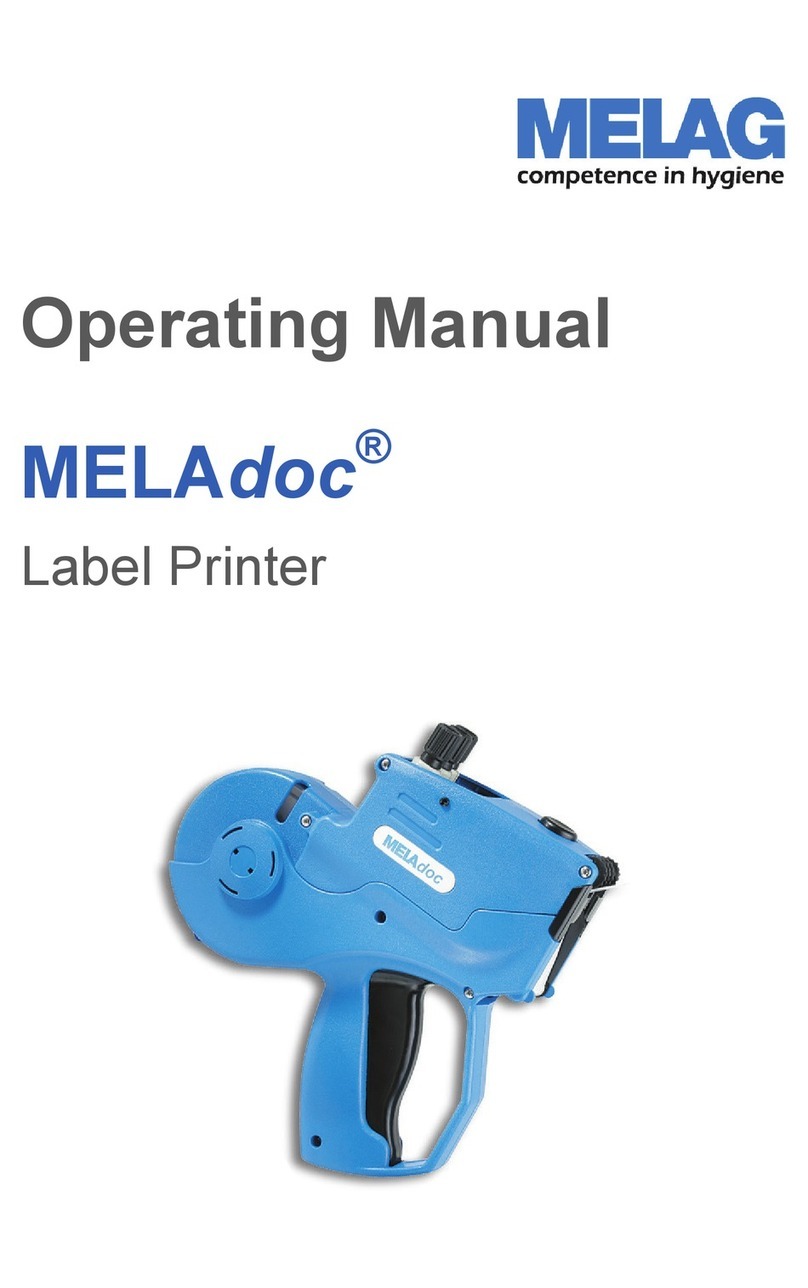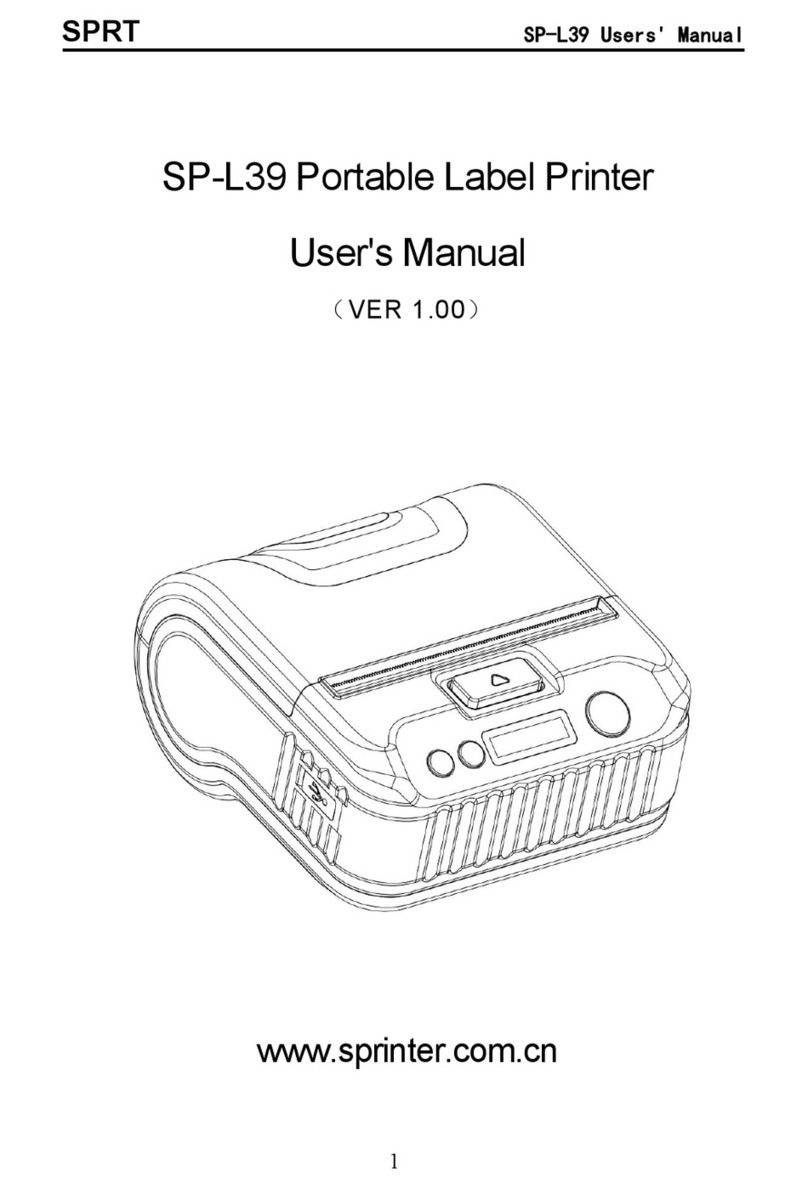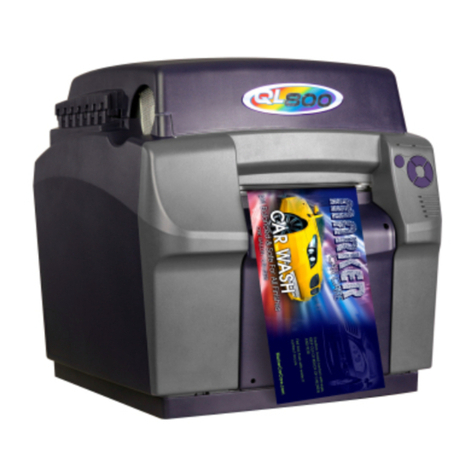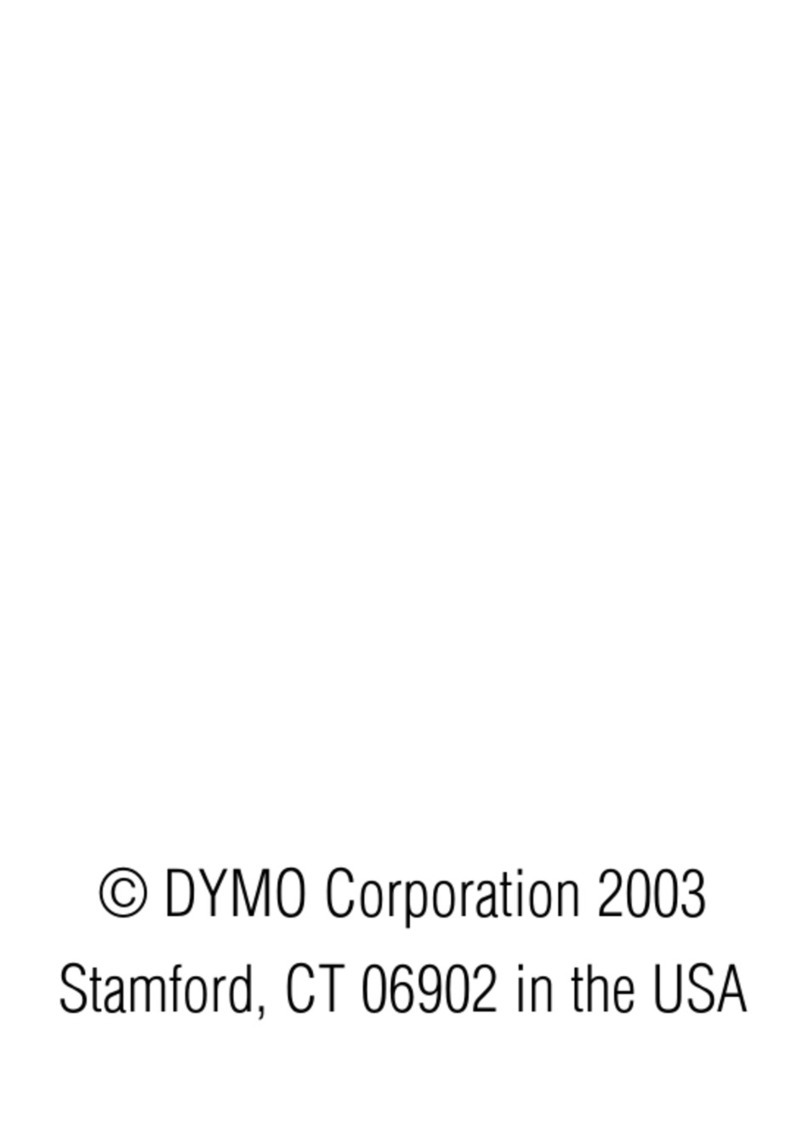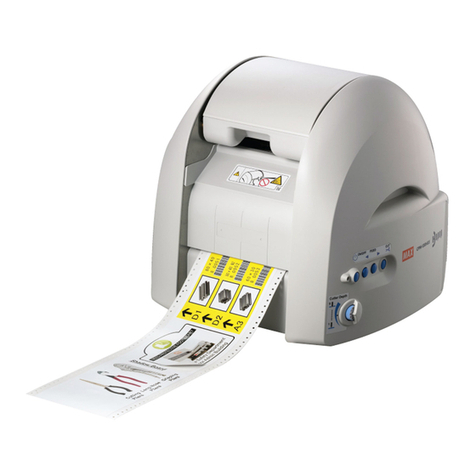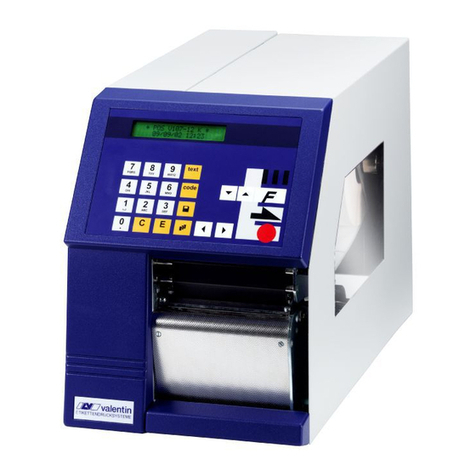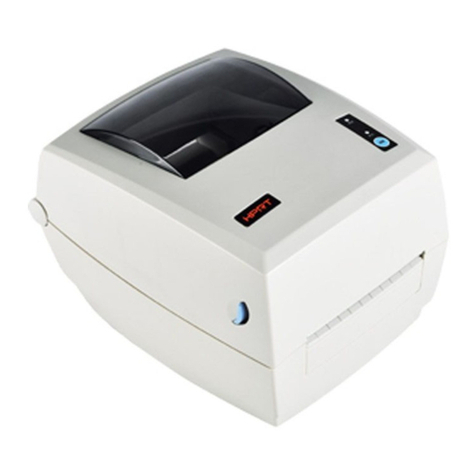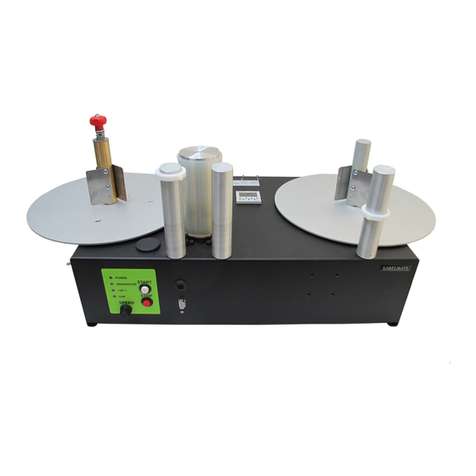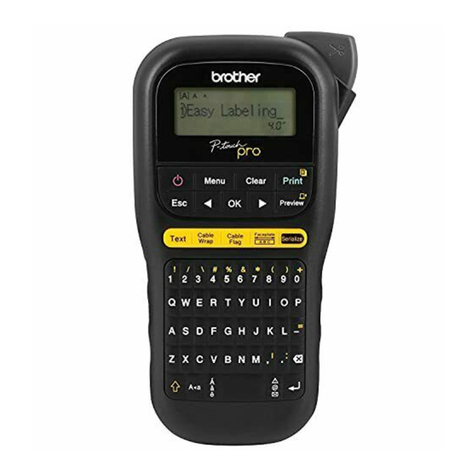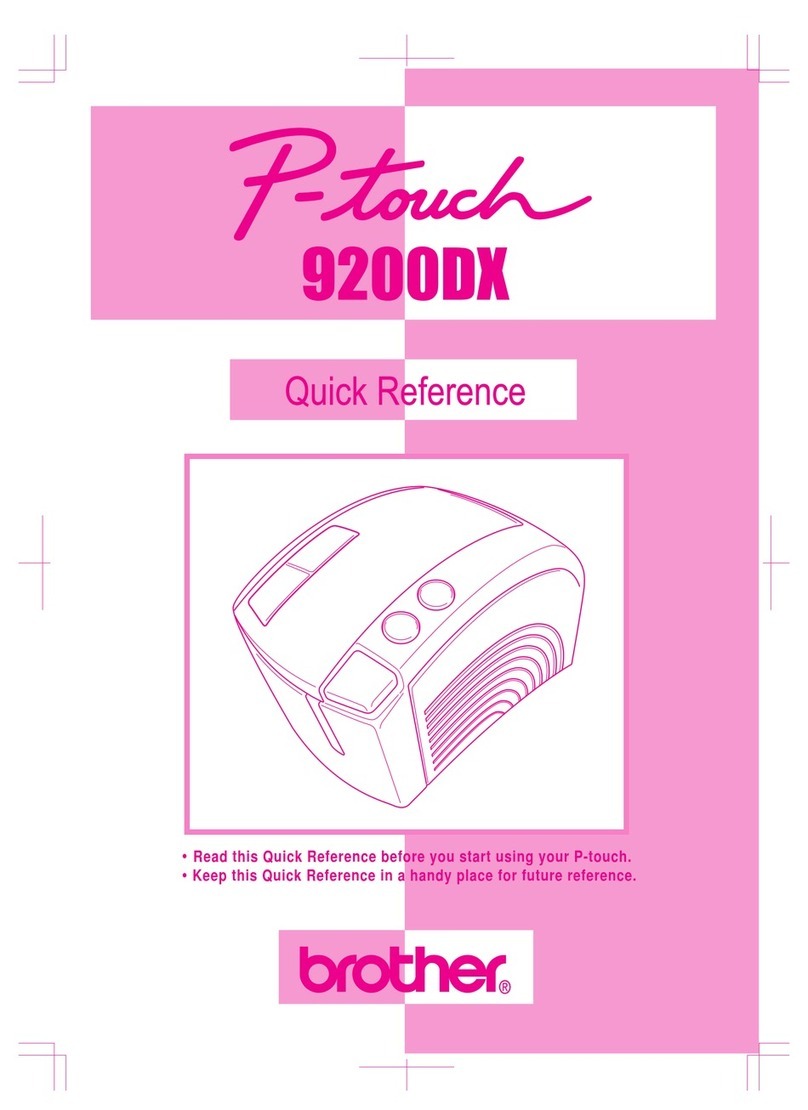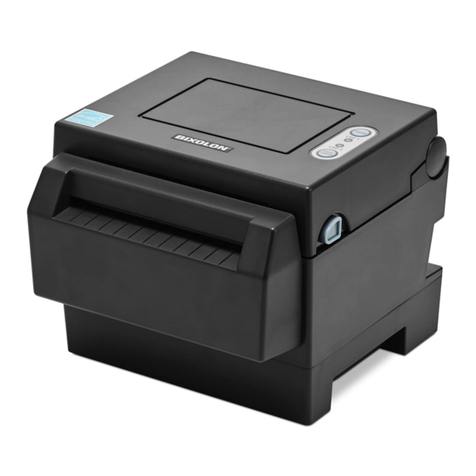SNBC BT-UR056 Owner's manual

BT-UR056/BT-UC056II/BT-UC156
PROGRAMMING MANUAL
V1.0
SHANDONG NEW BEIYANG INFORMATION TECHNOLOGY CO.,LTD

BT-UR056/BT-UC056II/BT-UC156 Programming Manual
- 1 -
REVISION HISTORY
Date Version Description Author
August 10,2005 V1.00 Primary version Mr. Cong Xinyuan;
Mr.Yang Xiangang

BT-UR056/BT-UC056II/BT-UC156 Programming Manual
Declaration
If you need this manual, please comply with the clause below.
If you disagree with it, please return this manual immediately.
This manual contains the private confidential information belonging to Shandong New Beiyang
Information Technology Co., Ltd. (hereinafter referred to as SNBC). You must keep its relative content as
the confidential information. If the users are commercial customers or entities, you should be aware to
disclose it to those people with the confidential responsibility including your employees, agencies and
partners. When you terminate the cooperation with SNBC or SNBC puts forward a request, you have to
stop using this manual and return it to SNBC, or destroy the confidential information.
If any relative organ such as court, arbitrator or government authority requests you to disclose any
confidential information of this manual, you must inform SNBC quickly and also agree that you shall
cooperate or assist with SNBC reasonably during the negotiation.
SNBC has the right to disclose its confidential information and is not responsible for the loss or damages
caused from the wrong usage or reference of this manual by users.
Information in this document is subject to change without notice, which is only used for product
maintenance or service relative to this manual. SNBC reserves the right to modify the manual. If users
need further data about the products, please feel free to contact SNBC or your local dealer.
No part of this document may be reproduced or transmitted in any form or by any means, electronic or
mechanical, for any purpose without the express written permission of SNBC.
Copyright
Copyright© 2005 by New Beiyang
Printed in China
Version 1.0
Technical Contact Information
In CHINA:
Address: 126 Kunlun Road, Huancui District, Weihai, Shandong, China
Hot line: 0086-631-5785998
Fax: 0086-631-5785995
P. C.: 264203
Http: // www.newbeiyang.com
E-mail: [email protected]
- 2 -

BT-UR056/BT-UC056II/BT-UC156 Programming Manual
- 3 -
Content
1 General Information...........................................................................................................................- 6 -
1.1 Key Terms .............................................................................................................................. - 6 -
1.2 Command Format .................................................................................................................. - 6 -
2 Command set ....................................................................................................................................- 7 -
HT ................................................................................................................................................ - 7 -
LF................................................................................................................................................. - 7 -
FF................................................................................................................................................. - 7 -
CR................................................................................................................................................ - 8 -
CAN.............................................................................................................................................. - 8 -
DLE EOT n................................................................................................................................... - 8 -
DLE ENQ n ................................................................................................................................ - 10 -
ESC FF ...................................................................................................................................... - 11 -
ESC SP n ................................................................................................................................... - 11 -
ESC ! n....................................................................................................................................... - 11 -
ESC $ nL nH .............................................................................................................................. - 12 -
ESC % n..................................................................................................................................... - 13 -
ESC & y c1 c2 [x1 d1...d(y × x1)]...[xk d1...d(y × xk)] ................................................................. - 13 -
ESC * m nL nH d1... dk .............................................................................................................. - 14 -
ESC–n........................................................................................................................................ - 16 -
ESC 2......................................................................................................................................... - 16 -
ESC 3 n...................................................................................................................................... - 16 -
ESC = n...................................................................................................................................... - 17 -
ESC ? n...................................................................................................................................... - 17 -
ESC @ ....................................................................................................................................... - 17 -
ESC D n1…nk NUL.................................................................................................................... - 18 -
ESC E n ..................................................................................................................................... - 18 -
ESC G n ..................................................................................................................................... - 19 -
ESC J n...................................................................................................................................... - 19 -
ESC L......................................................................................................................................... - 19 -
ESC M n..................................................................................................................................... - 20 -

BT-UR056/BT-UC056II/BT-UC156 Programming Manual
- 4 -
ESC R n ..................................................................................................................................... - 21 -
ESC S ........................................................................................................................................ - 21 -
ESC T n...................................................................................................................................... - 22 -
ESC V n ..................................................................................................................................... - 22 -
ESC W xL xH yL yH dxL dxH dyL dyH ....................................................................................... - 23 -
ESC \ nL nH ............................................................................................................................... - 24 -
ESC a n...................................................................................................................................... - 24 -
ESC c 0 n................................................................................................................................... - 25 -
ESC c 3 n................................................................................................................................... - 25 -
ESC c 4 n................................................................................................................................... - 26 -
ESC c 5 n................................................................................................................................... - 26 -
ESC d n...................................................................................................................................... - 26 -
ESC l n X0l X0h Y0l Y0h X1l X1h Y1l Y1h ................................................................................. - 27 -
ESC t n....................................................................................................................................... - 27 -
ESC v......................................................................................................................................... - 28 -
ESC { n....................................................................................................................................... - 28 -
FS p n m..................................................................................................................................... - 29 -
FS q n [xL xH yL yH d1...dk]1...[xL xH yL yH d1...dk]n ............................................................... - 30 -
GS FF......................................................................................................................................... - 31 -
GS ! n......................................................................................................................................... - 32 -
GS # n........................................................................................................................................ - 33 -
GS $ nL nH................................................................................................................................. - 33 -
GS ( A pL pH n m ....................................................................................................................... - 33 -
GS * x y d1...d(x × y × 8) ............................................................................................................ - 34 -
GS / m ........................................................................................................................................ - 35 -
GS :............................................................................................................................................ - 36 -
GS B n........................................................................................................................................ - 36 -
GS H n ....................................................................................................................................... - 36 -
GS L nL nH................................................................................................................................. - 37 -
GS W nL nH ............................................................................................................................... - 37 -
GS \ nL nH.................................................................................................................................. - 38 -

BT-UR056/BT-UC056II/BT-UC156 Programming Manual
- 5 -
GS ^ r t m ................................................................................................................................... - 38 -
GS a n........................................................................................................................................ - 39 -
GS f n......................................................................................................................................... - 41 -
GS h n........................................................................................................................................ - 41 -
①GS k m d1...dk NUL②GS k m n d1...dn ................................................................................. - 41 -
GS r n......................................................................................................................................... - 44 -
GS v 0 m xL xH yL yH d1....dk.................................................................................................... - 44 -
GS w n ....................................................................................................................................... - 45 -
FS ! n.......................................................................................................................................... - 46 -
FS & ........................................................................................................................................... - 47 -
FS - n ......................................................................................................................................... - 47 -
FS .............................................................................................................................................. - 47 -
FS S n1 n2 ................................................................................................................................. - 48 -
FS W n ....................................................................................................................................... - 48 -
3 Programming Instructions................................................................................................................- 49 -
3.1 General information.............................................................................................................. - 49 -
3.2 Commands application......................................................................................................... - 49 -
3.2.1 Initialization ................................................................................................................. - 49 -
3.2.2 Printing settings and printout (Characters/barcode/bit image)..................................... - 49 -
3.2.3 Print............................................................................................................................. - 51 -
3.2.4 Status inquiry .............................................................................................................. - 51 -
3.2.5 Download bit images................................................................................................... - 51 -
3.2.6 Recommendations on applicable flow for programm .................................................. - 54 -
APPENDIX A: Code 128 bar code .....................................................................................................- 56 -
APPENDIX B: Printing mode and it’s transition ..................................................................................- 60 -

BT-UR056/BT-UC056II/BT-UC156 Programming Manual
1 General Information
1.1 Key Terms
Real-time commands – These commands are acted on immediately upon being received by the printer.
Page mode –Under this mode, the printer possesses all data in specified memory and thinks of this as a
virtual page. The page is printed when the printer receives print command either FF or ESC FF;
Standard mode –Standard mode is the default mode of printer, namely line mode. Under this mode, the
printer prints data and feeds paper upon print line buffer full (data is enough for one print line) or
receiving print command like LF;
HRI character – Human Readable Interface;
NV memory– Non-volatile memory in which data stored does not loss when power off.
RAM –Random Access Memory
Motion unit –The motion unit has vertical motion unit and horizontal motion unit, which specify the least
space for vertical motion and horizontal motion.
ASB – Auto status back.
DPI –Print dots per inch (one inch equals to 25.4mm). It is used to identify the resolution of a printer.
Example, 203DPI means 203 print dots per inch. DPI: Dot Per Inch.
1.2 Command Format
1) [Name] The name and function summary.
2) [Format] The command format is expressed in ASCII, Hex and Decimal separately.
3) [Range] The range of variation value is selected for a command.
4) [Default] After initialization of printer with power on, primary value is used in commands.
5) [Description] The detailed functions of command.
6) [Note] Lists items shall be given about attention and main features in use.
7) [Reference] Lists all other commands related to current command.
---> DLE EOT n
---> [Name] Real-time status transmission
---> [Format] ASCII DLE EOT n
Hex 10 04 n
Decimal 16 4 n
---> [Range] 1 ≤n ≤4
---> [Description] Transmits the printer status specified by ‘n’ in real-time.
---> [Note] The printer will return relevant status immediately after receiving this command.
- 6 -

BT-UR056/BT-UC056II/BT-UC156 Programming Manual
- 7 -
2 Command set
HT
[Name] Horizontal tab
[Format] ASCII HT
Hex 09
Decimal 9
[Description] Moves the print position to the next horizontal tab position.
[Notes] • This command is ignored unless the next horizontal tab position has been set.
• If the next horizontal tab position exceeds the printing area, the printer sets the printing
position to [Printing area width + 1].
• Horizontal tab positions are set with ESC D.
• If this command is received when the printing position is at [printing area width+ 1], the
printer executes print buffer-full printing of the current line and horizontal tab processing
from the beginning of the next line.
• The default setting of the horizontal tab position for the paper roll is font 0 (12×24) every
8th character.
• When the buffer of the line is full, the printer executes as follows:
In standard mode, the printer print the data of current line and set the printing position at
the beginning of next line.
In page mode, the printer shifts newline and sets the printing position at the beginning of
next line.
[Reference] ESC D
LF
[Name] Print and feed a line.
[Format] ASCII LF
Hex 0A
Decimal 10
[Description] In standard mode, it prints the data in the print buffers and feeds one line based on the
current line spacing.
[Note] This command sets the print position at the beginning of the line.
In page mode, the printer shift newline and set the position at the beginning of Next line.
But it doesn’t execute the print.
[Reference] ESC 2, ESC 3
FF
[Name] Print and feed paper
[Format] ASCII FF
Hex 0C
Decimal 12
[Description] (1) If the paper is continuous type;
* In page mode print all data in buffers and return to standard mode;
* In standard mode this command is same as LF;

BT-UR056/BT-UC056II/BT-UC156 Programming Manual
- 8 -
* The print area set by ESC W is recovered to the default;
(2) If the paper is marked type:
* In page mode prints all data in the print buffers, then it shall not return to standard mode
and not clear the data in the buffers. After the printing, the printer feeds the next label to
printing position. The coordinates in current print buffers are not changed.
* In standard mode this command equals to GS FF when executing mark orientation.
[Notes] This command sets the print position at the beginning of the line.
[Reference] ESC FF, ESC L, ESC S, GS (F, GS FF
CR
[Name] Print and carriage return
[Format] ASCII CR
Hex 0D
Decimal 13
[Description] When automatic line feed is enabled, this command functions the same as LF; when
automatic line feed is disabled, this command is ignored.
[Notes] Set the print starting position at the beginning of the lines.
This command CR is set according to the printer configuration.
[Reference] LF
CAN
[Name] Cancel print data in page mode
[Format] ASCII CAN
Hex 18
Decimal 24
[Description] In page mode, deletes all print data in current print buffers.
[Notes] This command is enabled only in page mode.
· If data that existed in the previously specified printing area also exists in the currently
specified printing area, it is deleted.
[Reference] ESC L, ESC W
DLE EOT n
[Name] Real-time status transmission
[Format] ASCII DLE EOT n
Hex 10 04 n
Decimal 16 4 n
[Range] 1 ≤n ≤4
[Description] Transmits the printer status specified by n in real-time, according to the following
parameters:
n = 1: Transmit off-line/on-line status
n = 2: Transmit printer status
n = 3: Transmit printer status
n = 4: Transmit paper sensor status
[Notes] · The status is transmitted whenever the command is received.

BT-UR056/BT-UC056II/BT-UC156 Programming Manual
- 9 -
· This command should not be used within the data sequence of another command that
consists of 2 or more bytes.
· Even though the printer is not selected with ESC = (select peripheral device), this
command is effective.
· The printer transmits the current status. Each status is represented by one-byte data.
· The printer transmits the status without confirming whether the host computer can receive
data.
· The printer executes this command upon receiving it.
· The command is enabled only for serial interface printer. In any status the printer
executes this command upon receiving it.
n = 1: Printer on-line/off-line status
Bit 0/1 Hex Decimal Function
0 0 00 0 Fixed to 0
1 1 02 2 Fixed to 0
2 0 00 0 Fixed to 0
3 0 00 0 On-line
1 08 8 Off-line
4 1 10 16 Fixed to 0
5 0 00 0 Fixed to 0
0 00 0 The state of printer is normal
6 1 40 64 The state of printer is abnormal
7 0 00 00 Fixed to 0.
n = 2: Printer status
Bit 0/1 Hex Decimal Function
0 0 00 0 Fixed to 0
1 1 02 2 Fixed to 1
0 00 0 Top cover is closed
2 1 04 4 Top cover is open
0 00 0 Without using the FEED button
3 1 08 8 Press down the FEED button
4 1 10 16 Fixed to 1
5 0 00 0 Fixed to 0
0 00 0 The printer status is normal
6 1 40 64 The state of printer is abnormal
7 0 00 0 Fixed to 0

BT-UR056/BT-UC056II/BT-UC156 Programming Manual
- 10 -
n = 3: Printer status
Bit 0/1 Hex Decimal Function
0 0 00 0 Fixed to 0
1 1 02 2 Fixed to 1
2 Fixed to 0
3 Fixed to 0
4 1 10 16 Fixed to 1
0 00 0 Top cover is closed
5 1 20 00 Top cover is open
0 00 0 The Printhead temperature
6 1 40 64 The Printhead temperature
7 0 00 0 Fixed to 0
n = 4: Paper transmission status
Bit 1/0 Hex Decimal Function
0 0 00 0 Fixed to 0
1 1 02 2 Fixed to 1
0 00 0 Paper end
2,3 1 0C 12 Paper adequate
4 1 10 16 Fixed to 1.
0 00 0 Paper present
5,6 1 60 96 Paper end
7 0 00 0 Fixed to 0
[Reference] DLE ENQ, GS a, GS r
DLE ENQ n
[Name] Real-time request to printer
[Format] ASCII DLE ENQ n
Hex 10 05 n
Decimal 16 5 n
[Range] 1 ≤n ≤2
[Description] Respond to a request from the host computer. n specifies the requests as follows:
n Request
1Recover from an error and restart printing from the line where the error occurred
2Recover from an error and clear the data in the receiving and printing buffers
[Notes] · This command is effective only when mark checkout has error or paper is end.
· In Serial interface mode, the printer starts processing data upon receiving this command.
· In Parallel interface model, this command can not be executed when the printer is busy.
· This command should not be contained within another command that consists of two or
more bytes.
· Even though the printer is disabled with ESC = (Select peripheral device), the error
recovery functions are effective.
[Reference] DLE EOT

BT-UR056/BT-UC056II/BT-UC156 Programming Manual
- 11 -
ESC FF
[Name] Print data in page mode
[Format] ASCII ESC FF
Hex 1B 0C
Decimal 27 12
[Description] In page mode, prints all buffered data in the printing area collectively.
[Notes] · This command is enabled only in page mode.
· In using labels, the command shall not execute label orientation after the printing.
· After printing, the printer does not clear the buffered data, don’t change
setting values for ESC T and ESC W, and the position for buffering characters.
[Reference] FF, ESC L, ESC S
ESC SP n
[Name] Set right-side character spacing
[Format] ASCII ESC SP n
Hex 1B 20 n
Decimal 27 32 n
[Range] 0 ≤n ≤255
[Description] Sets the character spacing for the right side of the character to [n × 0.125mm(n × 0.0049
inches).
[Notes] · When characters are magnified, the character spacing is n times normal value.
· This command sets values independently in each mode (standard and page modes).
[Default] n = 0
ESC ! n
[Name] Select print mode(s)
[Format] ASCII ESC ! n
Hex 1B 21 n
Decimal 27 33 n
[Range] 0 ≤n ≤255
[Description] Selects print mode(s) using n as follows:
Bit 1/0 Hex Decimal Function
0 00 0
If the printer use chinese font, it is disabled.
If the printer use west font, setting character is font 0.
0
1 01 1
If the printer use chinese font, it is disabled.
If the printer use western font, setting character is font 1.
1,2 Undefined.
0 00 0 Emphasized mode not selected
3 1 08 8 Emphasized mode selected
0 00 0 Double-height mode not selected
4 1 10 16 Double-height mode selected
0 00 0 Double-width mode not selected
5 1 20 32 Double-width mode selected

BT-UR056/BT-UC056II/BT-UC156 Programming Manual
- 12 -
6 Undefined
0 00 0 Underline mode not selected
7 1 80 128 Underline mode selected
[Notes] · When both double-height and double-width modes are selected, quadruple size
characters are printed.
· The printer can underline all characters, but can not underline the space set by
HT or 90° clockwise rotated characters.
· The thickness of the underline is that selected by ESC -, regardless of the
character size.
· All the characters on the line are aligned at the baseline.
· ESC E can also turn on or off emphasized mode. However, the setting of the
last received command is effective.
· ESC G functions same as emphasized mode. However, the setting of the last
received command is effective.
· ESC – can also turn on or off underline mode. However, the setting of the last
received command is effective.
· GS ! can also select character size. However, the setting of the last received
command is effective.
[Default] n = 0
[Reference] ESC -, ESC E, GS !
ESC $ nL nH
[Name] Set absolute horizontal print position
[Format] ASCII ESC $ nL nH
Hex 1B 24 nL nH
Decimal 27 36 nL nH
[Range] 0≤nL ≤255
0 ≤nH≤255
[Description] Sets the distance from the beginning of the line to the print position is
[( nL + nH × 256) × (vertical or horizontal motion unit)] inches.
[Notes] · Settings outside the specified printable area are ignored.
· In standard mode, the horizontal motion unit (x) is used.
· In page mode, ESC W can also set starting position. However, the setting of the last
received command is effective.
· In page mode, horizontal or vertical motion unit differs depending on the direction and
starting position of the printable area as follows:
(1) When the starting position is set to the upper left or lower right of the
printable area using ESC T, the horizontal motion unit ( x) is used.
(2) When the starting position is set to the upper right or lower left of the
printable area using ESC T, the vertical motion unit ( y) is used.
[Reference] ESC \, GS $, GS \

BT-UR056/BT-UC056II/BT-UC156 Programming Manual
- 13 -
ESC % n
[Name] Select/cancel user-defined character set
[Format] ASCII ESC % n
Hex 1B 25 n
Decimal 27 37 n
[Range] 0 ≤n ≤255
[Description] Selects or cancels the user-defined character set.
· When the LSB of n is 0, the user-defined character set is canceled.
· When the LSB of n is 1, the user-defined character set is selected.
[Notes] · When the user-defined character set is canceled, the internal character is
automatically selected.
· n is available only for the least significant bit.
[Default] n = 0
[Reference] ESC &, ESC ?
ESC & y c1 c2 [x1 d1...d(y × x1)]...[xk d1...d(y × xk)]
[Name] Define user-defined characters
[Format] ASCII ESC & y c1 c2 [x1 d1...d(y × x1)]...[xk d1...d(y × xk)]
Hex 1B 26 y c1 c2 [x1 d1...d(y × x1)]...[xk d1...d(y × xk)]
Decimal 27 38 y c1 c2 [x1 d1...d(y × x1)]...[xk d1...d(y × xk)]
[Range] y = 3
32 ≤c1 ≤c2 ≤127
0< x ≤24
0 ≤d1 ... d(y × xk) ≤255
[Description] Defines user-defined characters.
· y specifies the number of bytes in the vertical direction.
· c1 specifies the beginning character ASCII code , and c2 specifies the final character
ASCII code.
· x specifies the number of dots in the horizontal direction.
[Notes] · The allowable character code range is from ASCII code <20>H to <7F>H (96 characters).
· It is possible to define multiple characters for consecutive character codes.
If only one character is desired, use c1 = c2.
· d is the dot data for download characters. The dot pattern is in the horizontal direction
from the left side.
· The data to define a user-defined character is (y × x) bytes.
· When X value is less than 13, the user-defined character width is defaulted as 13.
· Each bit of data presents one dot, set a corresponding bit to 1 to print a dot or 0
to not print a dot.
· The user-defined character is cleared when:
①ESC ? is executed.
The the power is turned off.②
[Default] Internal character set.
[Reference] ESC %, ESC ?
[Example]

BT-UR056/BT-UC056II/BT-UC156 Programming Manual
ESC * m nL nH d1... dk
[Name] Select bit-image mode
[Format] ASCII ESC * m nL nH d1...dk
Hex 1B 2A m nL nH d1...dk
Decimal 27 42 m nL nH d1...dk
[Range] m = 0, 1, 32, 33
0 ≤nL ≤255
0 ≤nH ≤3
0 ≤d ≤255
[Description] Selects a bit-image mode using m for the number of dots specified by nL and nH, as
follows:
Vertical Direction Horizontal Direction
m Mode Dots Resolution Resolution Number of Data (K)
08-dot single-density 8 67 DPI 101 DPI nL + nH × 256
1 8-dot double-density 8 67 DPI 203 DPI nL + nH × 256
32 24-dot single-density 24 203 DPI 101 DPI ( nL + nH × 256) × 3
33 24-dot double-density 24 203 DP 203 DPI ( nL + nH × 256) × 3
[Notes] · If the values of m is out of the specified range, nL and data following are
processed as normal data.
· The nL and nH indicate the number of dots of the bit image in the horizontal
direction. The number of dots is calculated by nL + nH × 256.
· If the bit-image data input exceeds the number of dots to be printed on a line,
the excess data is ignored.
· d indicates the bit-image data, each bit represent a dot. Set a corresponding bit to 1 to
print a dot or to 0 to not print a dot.
· After sending a bit image, the printer returns to normal data processing mode.
- 14 -

BT-UR056/BT-UC056II/BT-UC156 Programming Manual
· If the printing area set by GS L and GS W is less than the printing width needed by GS/,
the printer shall act as below quickly (but cannot exceed Max. printing width).
1) The printing area shall extend to the right for matching the printing bit image.
2) If step 1) cannot provide enough width for the data, the left margin shall be reduced to
match it. For each bit of the data in single density mode (m=0.32), the printer shall print
two dots; for each bit of the data in double density mode (m=1.33), the printer shall
print one dots. In calculating the printable data for each line, you must consider it.
· After printing a bit image, the printer shall return normal data processing mode.
· This command shall not be effected by other printing modes (such as emphasized,
double-strike, underline, character size, or white/black reverse printing) except
upside-down printing mode.
· The relation of the data and the dots to be printed is as below:
When 8-dot bit image is selected:
When 24-dot bit image is selected:
- 15 -

BT-UR056/BT-UC056II/BT-UC156 Programming Manual
- 16 -
ESC–n
[Name] Turn underline mode on/off
[Format] ASCII ESC - n
Hex 1B 2D n
Decimal 27 45 n
[Range] 0 ≤n ≤2, 48 ≤n ≤50
[Description] Turns underline mode on or off, based on the following values of n:
n Function
0, 48 Turns off underline mode
1, 49 Turns on underline mode (1-dot thick)
2, 50 Turns on underline mode (2-dots thick)
[Notes] · The printer can underline all characters (including right-side character spacing),
but cannot underline the space set by HT.
· The printer cannot underline 90° clockwise rotated characters and white/black
inverted characters.
· When underline mode is turned off the following data is not underlined, and
the underline thickness set does not change. The default underline thickness is 1 dot.
· Changing the character size does not affect the current underline thickness.
· Underline mode can also be turned on or off by using ESC !. Note, however,
that the last received command is effective.
[Default] n = 0
[Reference] ESC !
ESC 2
[Name] Select default line spacing
[Format] ASCII ESC 2
Hex 1B 32
Decimal 27 50
[Description] Set the line spacing to be 3.875 mm (31 x 0.125 mm)
[Notes] · The line spacing can be set independently in standard mode and in page mode.
[Reference] ESC 3
ESC 3 n
[Name] Set line spacing
[Format] ASCII ESC 3 n
Hex 1B 33 n
Decimal 27 51 n
[Range] 0 ≤n ≤255
[Description] Sets the line spacing to [n × vertical or horizontal motion unit] inches.
[Notes] · The line spacing can be set independently in standard mode and in page mode.
· In standard mode, the vertical motion unit (y) is used.
· In page mode, this command functions as follows, depending on the starting
position of the printable area for selecting horizontal or vertical motion unit:
①When the starting position is set to the upper left or lower right of the

BT-UR056/BT-UC056II/BT-UC156 Programming Manual
- 17 -
printable area using ESC T, the vertical motion unit (y) is used.
②When the starting position is set to the upper right or lower left of the print
able area using ESC T, the horizontal motion unit ( x) is used.
[Default] n = 31
[Reference] ESC 2
ESC = n
[Name] Select printer
[Format] ASCII ESC = n
Hex 1B 3D n
Decimal 27 61 n
[Range] 0 ≤n ≤1
[Description] Selects device to which host computer sends data, using n as follows:
Bit 1/0 Hex Decimal Function
0 00 0 Printer disabled
0 1 01 1 Printer enabled
1-7 Undefined
[Notes] · When the printer is disabled, it ignores all data except for error-recovery commands (DLE
EOT, DLE ENQ) ESC =until it is enabled by this command.
[Default] n = 1
ESC ? n
[Name] Cancel user-defined characters
[Format] ASCII ESC ? n
Hex 1B 3F n
Decimal 27 63 n
[Range] 32 ≤n ≤127
[Description] Cancels user-defined characters.
[Notes] · If a user-defined character has not been defined for the specified character code, the
printer ignores this command.
· Cancel the character presented by n in user-defined characters. After the cancellation,
internal character set shall be used.
[Reference] ESC &, ESC %
ESC @
[Name] Initialize printer
[Format] ASCII ESC @
Hex 1B 40
Decimal 27 64
[Description] Clear the data in the printing buffer. The print mode is set to be the default mode when
powered on.
[Note] • Not clear the downloaded bit image, and clear the downloaded user-defined character in
RAM.
• When the default configuration of the printer is label, the defaulted print mode is page

BT-UR056/BT-UC056II/BT-UC156 Programming Manual
- 18 -
mode when powered on.
• When the default configuration of the printer is continuous paper, the defaulted print
mode is standard mode when powered on.
• Keep macro-definition.
ESC D n1…nk NUL
[Name] Set horizontal tab positions
[Format] ASCII ESC D n1...nk NUL
Hex 1B 44 n1...nk 00
Decimal 27 68 n1...nk 0
[Range] 1 ≤n ≤255
1 ≤k ≤32
[Description] Sets horizontal tab positions.
· n specifies the column number for setting a horizontal tab position from the beginning of I
the line.
· k indicates the total number of horizontal tab positions to be set.
[Notes] · The horizontal tab position is calculated as follows:
Character width x n. The character width includes the right-side character spacing.
· This command cancels the previous horizontal tab settings.
· When setting n = 8, the print position is moved to column 9 .
· Up to 32 tab positions (k = 32) can be set. Data exceeding 32 tab positions is processed
as normal data.
· Arrange tab positions in ascending order and place a NUL at the end.
· When [n] k is less than or equal to the preceding value [n] k-1, tab setting is finished and
the following data is processed as normal data.
· ESC D NUL cancels all horizontal tab positions.
· Change character width, and previous tab positions specified is not changed.
· Character width is independent under standard mode and page mode.
[Default] The default tab positions are at intervals of 8 characters for font A (12 × 24).
[Reference] HT
ESC E n
[Name] Turn emphasized mode on/off
[Format] ASCII ESC E n
Hex 1B 45 n
Decimal 27 69 n
[Range] 0 ≤n ≤255
[Description] Turns emphasized mode on or off
When the LSB of n is 0, emphasized mode is turned off.
When the LSB of n is 1, emphasized mode is turned on.
[Notes] · Only the least significant bit of n is enabled.
· This command and ESC ! turn on and off emphasized mode in the same way.
The last command received is enabled.
· ESC G can turn on or off emphasized mode and double-strike mode. The last command
received is enabled.

BT-UR056/BT-UC056II/BT-UC156 Programming Manual
- 19 -
[Default] n = 0
[Reference] ESC!
ESC G n
[Name] Turn on/off double-strike mode
[Format] ASCII ESC G n
Hex 1B 47 n
Decimal 27 71 n
[Range] 0 ≤n ≤255
[Description] Turns double-strike mode on or off.
· When the LSB of n is 0, double-strike mode is turned off.
· When the LSB of n is 1, double-strike mode is turned on.
[Notes] · Only the lowest bit of n is enabled.
· Printer output is the same in double-strike mode and in emphasized mode.
· This command and ESC ! turn on and off emphasized mode in the same way.
The last command received is valid.
[Default] n = 0
[Reference] ESC E
ESC J n
[Name] Print and feed paper n dots line
[Format] ASCII ESC J n
Hex 1B 4A n
Decimal 27 74 n
[Range] 0 ≤n ≤255
[Description] Prints the data in the print buffer and feeds the paper [n × horizontal motion unit] inches.
[Notes] · After printing is completed, this command sets the print starting position to the
beginning of the line.
· The paper feed amount set by this command does not affect the values set by
ESC 2 or ESC 3.
· In standard mode, the printer uses the vertical motion unit (y).
· In page mode, select vertical motion unit or horizontal motion unit according to the print
area direction and the beginning position of print in the way as below:
①When the starting position is set to the upper left or lower right of the
printable area using ESC T, the vertical motion unit (y) is used.
②When the starting position is set to the upper right or lower left of the printable area
using ESC T, the horizontal motion unit ( x) is used.
· The maximum feeding distance is 900mm (35.4 inches). When the setting value
exceeds the maximum, it is converted to the maximum automatically.
ESC L
[Name] Select page mode
[Format] ASCII ESC L
Hex 1B 4C
Other manuals for BT-UR056
1
This manual suits for next models
2
Table of contents
Other SNBC Label Maker manuals
